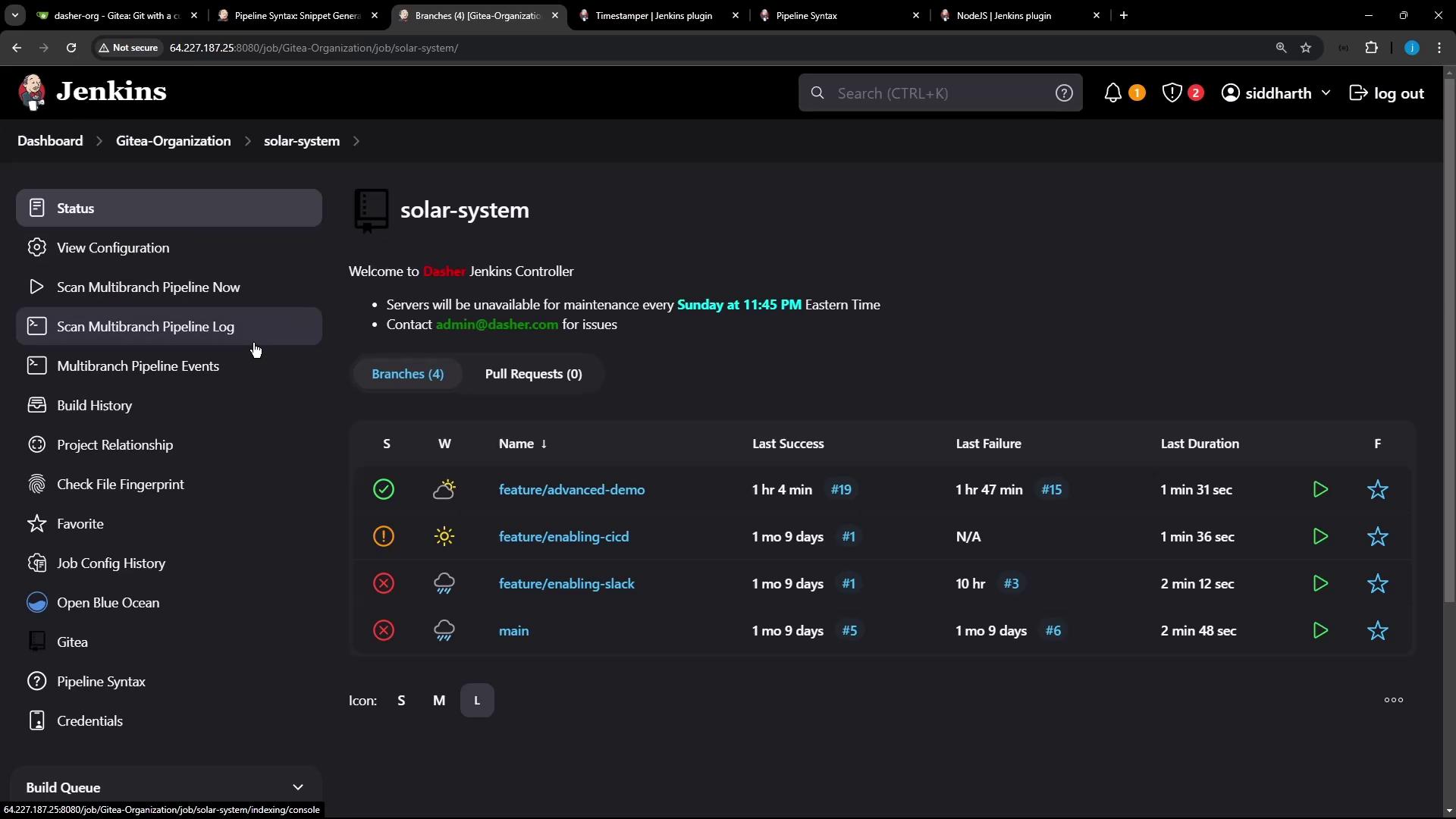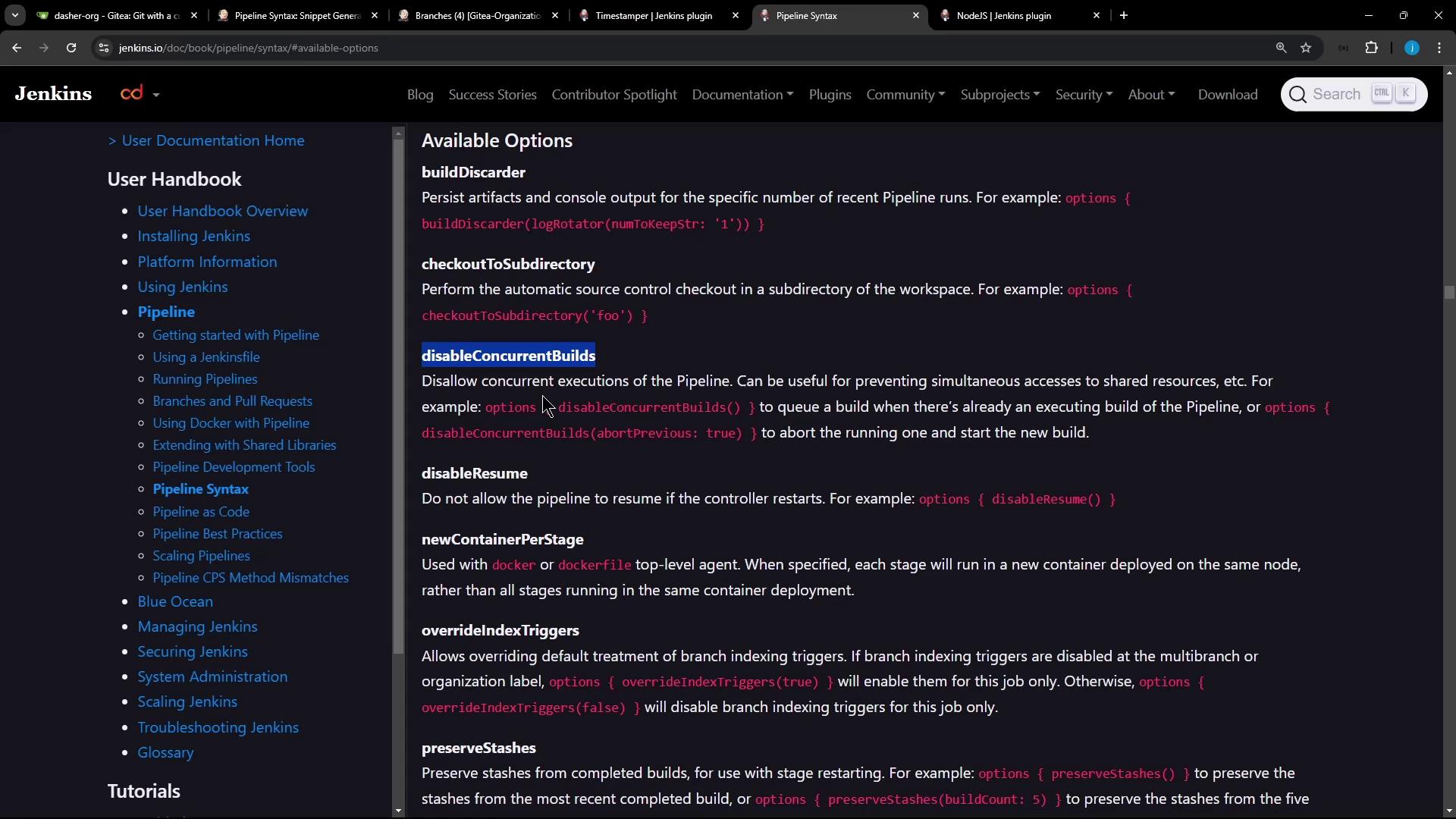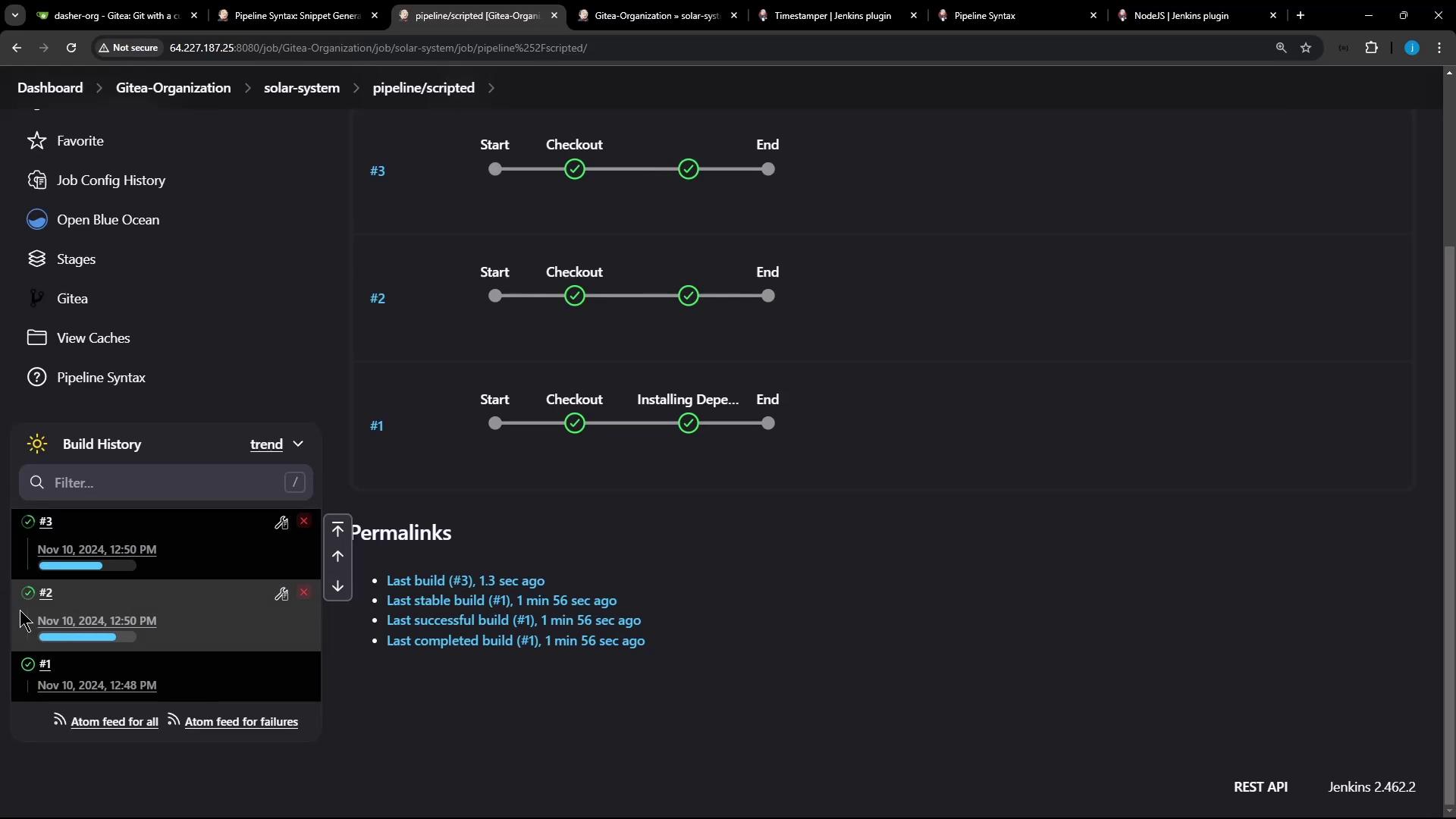Certified Jenkins Engineer
Pipeline Structure and Scripted vs Declarative
Demo Scripted Pipeline Initialize
In this guide, you’ll learn how to convert a Declarative Pipeline into a fully Scripted Pipeline for the solar-system repository on the features/advanced-demo branch. We’ll cover tool setup, environment configuration, caching, timestamps, and concurrency control.
1. Review the Existing Declarative Pipeline
The current pipeline installs Node.js, sets environment variables, and caches npm dependencies:
pipeline {
agent {
tools {
nodejs 'nodejs-22-6-0'
}
}
environment {
SONAR_SCANNER_HOME = tool 'sonarqube-scanner-610'
GITEA_TOKEN = credentials('gitea-api-token')
}
options {
disableResume()
disableConcurrentBuilds(abortPrevious: true)
}
stages {
stage('Installing Dependencies') {
agent any
options { timestamps() }
steps {
cache(maxCacheSize: 550, caches: [
arbitraryFileCache(
cacheName: 'npm-dependency-cache',
cacheValidityDecidingFile: 'package-lock.json'
)
]) {
sh 'node -v'
sh 'npm install --no-audit'
stash(includes: 'node_modules')
}
}
}
}
}
2. Create and Push the Scripted Branch
git checkout -b pipeline/scripted
git push -u origin pipeline/scripted
Pushing this branch triggers a new build in Jenkins.
3. Define the Scripted Pipeline
Wrap all steps inside a node block and configure tools, environment, and build properties:
node {
// 1. Tool setup: install Node.js and update PATH
env.NODEJS_HOME = tool 'nodejs-22-6-0'
env.PATH = "${env.NODEJS_HOME}/bin:${env.PATH}"
// 2. Prevent concurrent builds and resume
properties([
disableConcurrentBuilds(abortPrevious: true),
disableResume()
])
stage('Checkout') {
checkout scm
}
// 3. Timestamp wrapper for better logs
wrap([$class: 'TimestamperBuildWrapper']) {
stage('Installing Dependencies') {
// 4. Cache npm modules across builds
cache(maxCacheSize: 550, caches: [
arbitraryFileCache(
cacheName: 'npm-dependency-cache',
cacheValidityDecidingFile: 'package-lock.json'
)
]) {
sh 'node -v'
sh 'npm install --no-audit'
stash(includes: 'node_modules')
}
}
}
}
Note
Caching node_modules speeds up CI by restoring dependencies from the cache on subsequent runs, reducing network overhead.
4. Check Pipeline Syntax Reference
If you need to explore other Scripted Pipeline constructs, consult the official syntax guide.
// Example: wrap([$class: 'TimestamperBuildWrapper']) { ... }
// Visit: https://www.jenkins.io/doc/book/pipeline/syntax/
5. Validate First and Subsequent Runs
On the first run, the cache is empty:
> node -v
v22.6.0
> npm install --no-audit
added 365 packages in 3s
On subsequent runs, the cache is restored for faster installs:
[Cache ...] Restoring cache...
> node -v
v22.6.0
> npm install --no-audit
up to date in 1s
6. Ensure Concurrency Control
Start two builds in quick succession; the earlier build will be aborted to honor abortPrevious: true.
Warning
Aborting previous builds can interrupt cleanup tasks. Ensure your pipeline handles partial states and rollbacks correctly.
Table: Key Pipeline Options
| Option | Purpose |
|---|---|
disableConcurrentBuilds(abortPrevious: true) | Prevents parallel runs by aborting earlier builds on the same branch |
disableResume() | Disables resume from checkpoints to simplify workflow |
wrap([$class: 'TimestamperBuildWrapper']) | Adds timestamps to console output |
cache(...) | Reuses files between builds to speed up dependency installation |
Links and References
Watch Video
Watch video content